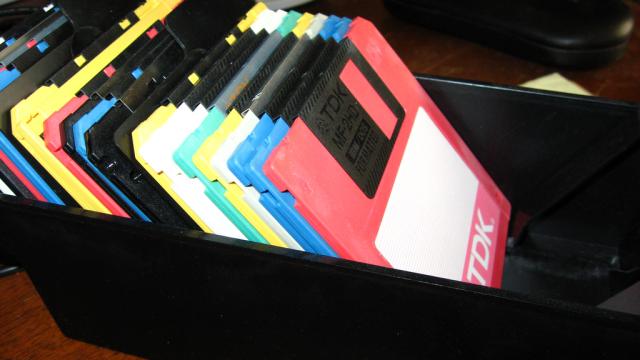With fire season upon us, not to mention all this recent time at home reminding us what matters most, the time has come to think about how you backup your data.
Now we’ve been online and chained to computers for decades, that digital detritus has built up, and sometimes it’s just easier to hold on to everything than sort the gold from the selfies with your finger over the lens. You probably have tens of thousands of photos, mp3s, word documents and videos strewn between old PC towers, ancient Zip discs, and random hard drives.
While it’s easy to see all this technology as being able to last forever, with just the things that read them becoming obsolete, that’s actually not the case. And if these files and photos are important to you, even if they don’t matter to anyone else, they’re worth reliably backing up so you don’t lose them.
According to the Council on Library and Information Resources in the U.S., CD-R, DVD-R, and DVD+R discs, if kept in ideal conditions of 25 degrees Celsius and 50% humidity, should last 100-200 years. Meanwhile CD-RW, DVD-RW and DVD+RW have 25 years, which is great, until you remember that’s not actually very long if you’re storing something like your wedding videos and baby photos on there. DVD-ROM and CD-ROMs could go anywhere between 20-100 years because there isn’t enough research done into them yet.
Unfortunately, all the moving parts in a hard disk drive (HDD) mean that they’re definitely going to fail at some point, probably sooner rather than later. Solid state drives (SSDs) have fewer moving parts, so they’re less likely to die randomly, but what nudges them closer to the big data centre in the sky is writing and rewriting. So, the more you delete and rewrite on an SSD, the closer to death it shuffles. You’d have to delete and rewrite a lot, but maybe after a couple of years assess whether it should stay in your regular rotation, or be moved to be long term backup to get the most out of it. The same goes for USB keys. There are things you can try to make everything last longer. But come to terms with the fact that everything that’s digital will eventually die along with your hopes and dreams of using that video of your teenage band on some kind of MTV special one day.
Using something like Google Drive or iCloud is a really good option in the short term to keep things organised and accessible, but that comes with costs and risks, so don’t make it your only backup. A lot of cloud storage companies that let you store large amounts of data for free are usually harvesting that data for advertising or other nefarious purposes, or have pretty terrible terms and conditions. $15 a month for 2TBs of Apple’s iCloud storage is a pretty steep cost, but if you use some of Apple’s other services like Music, News and Arcade, then the Apple One bundle service will give you better value.
But keep in mind that these cloud services won’t be around forever. Companies come and go. While most of the bigger, more reputable ones will probably give you some notice before turning off “the cloud”, some of the smaller ones might not. Fire and bankruptcy are inconveniently unpredictable. And even these clouds are all stored on physical drives somewhere, and everything can fail.
So, with that in mind, it might be worth spending a weekend sometime soon going through your files and just picking out the most, most, most important ones, and making physical and digital backups. The wedding video, baby photos, band demos, and voice memos from departed loved ones, those kinds of things. Having this much of your most important stuff stored digitally is unprecedented, but just because you can’t hold it, doesn’t make it any less worth saving.

Leave a Reply
You must be logged in to post a comment.